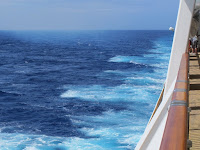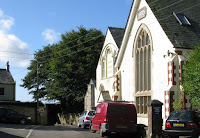< A joy, not a burden | Index | Miriam and Yoseph >
The basis for all church leadership is not in what we do, but in who we are. Jesus himself is of the royal line of David, he is king because of his family connection and he is King of kings because of his even stronger family connection as one person in the triune nature of the Most High.
Matthew 1:1-17 - 'This is the genealogy of Yahshua'...
Right at the beginning of the New Testament is a statement that should make us sit up and think about leadership. It's not about what Jesus would do during his three years of ministry, fundamentally it's all about who he is. And the same is surely true for us.
The foundation for any kind of church leader is who they are, not what they do. Jesus' claim to be the promised, anointed One is based on his inheritance. He is of the line of kingship, descended from David, not depending on conquest or appointment or influence through political manoeuvring. And he is descended from the father of the race, Abraham.
A greater line - As will become clear later during his three years of travelling and sharing the good news of the kingdom, he has a third line of relationship - with the Father and the Spirit. So he is of the kingly line through David, of the chosen nation through Abraham, and has an inseparable presence as part of the triune nature of the Almighty. He could not come with a greater recommendation or from a higher source.
But take note of some of the other characters in the genealogy. Abraham we've already noted, there is Isaac who prefigures the Son to be offered up by a loving heavenly Father, and he is of the line of Judah from which Judaea takes its name.
There is Rahab, a non-Jewish prostitute and her son Boaz who redeemed Ruth, and Solomon, the one who was wise enough to ask for wisdom. And last of all there is Joseph who was not Yahshua's father but who turned out to be a mere building contractor yet a great stepfather. No man was his ancestor except through a woman, Mary.
Let me repeat that. No man was Jesus' ancestor except through a woman. The entire male genealogy consists of nothing more than step-ancestors!
Not a matter of ancestry - If this tells us nothing else it should tell us that following Yahshua depends not on our inadequate human ancestry but on our relationship with the Almighty. It depends only on a willingness to turn back to the Father and receive the gift of being hidden in Christ. This is not a matter of leadership as the world sees it. Instead it's a matter of humility and acceptance and love. If a man or a woman is to lead it can only be because Jesus himself has chosen and equipped them.
These first seventeen verses of the New Testament therefore set the scene for leaders and leadership. They are foundational. Leaders are to be humble, chosen by the King alone, not necessarily of high birth. There is no inherited leadership. No hierarchical leadership. There are just people willing to play their part whatever the cost. Just like Jesus!
If you want to follow Jesus don't ask, 'What did he do?' Ask, 'Who is he?' If you want to be a leader don't ask, 'What have I done?' Ask 'Who am I?' If you want to follow a leader don't ask, 'What have they done?' Ask, 'Who are they?'
Jesus said, 'Apart from me you can do nothing'. (John 15:5)
Questions:
- What have you done and achieved in your life? What does it amount to?
- Who are you? (Who are you in yourself, in Christ, in your heart?)
- Are you a good model for those around you? Are you following Jesus?
- If people follow you will they end up in a good place?
See also:
- Law or grace? - Journeys of heart and mind
- Levites, priests and elders - Jon's journey
- Titles, positions and authority - Gibby Espinosa
- What are we called to do? - Journeys of heart and mind
< A joy, not a burden | Index | Miriam and Yoseph >






























